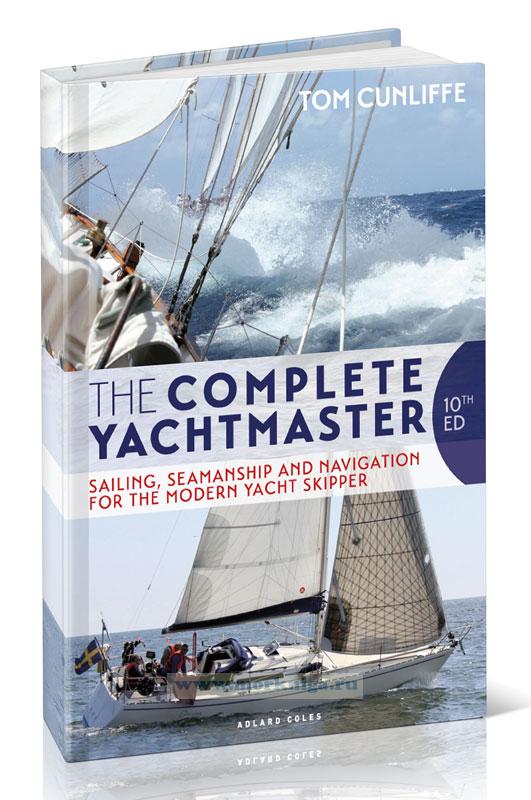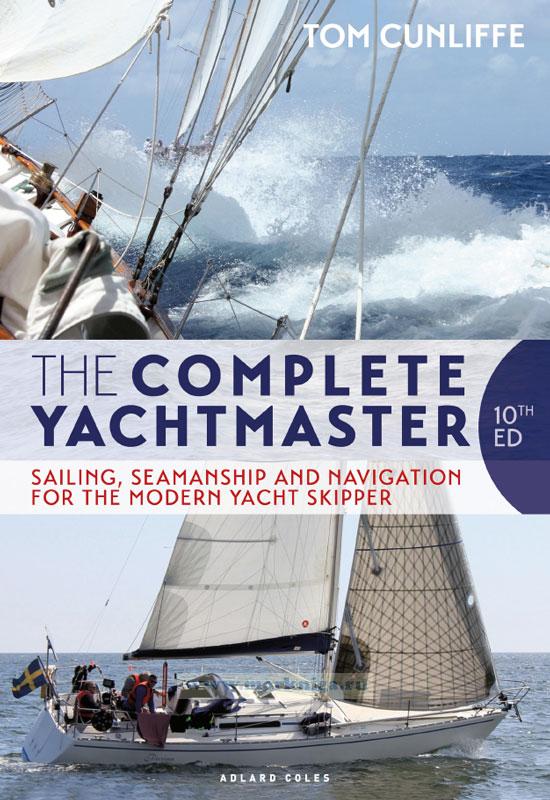The Complete Yachtmaster/Полное руководство яхтсмена
Книга на английском языке
См. также Полное руководство для яхтсмена на русском языке.
In this fully revised and up-to-date 10th edition, Tom Cunliffe brings together all the essentials of modern cruising in one volume. He presents an analysis of a good skipper, the theory and practice of sailing and sail trim, the art of seamanship, accurate navigation including chart plotters and PCs, understanding meteorology, heavy weather preparation, understanding yacht stability and coping with emergencies.
Contents
Introduction
1 The skipper
2 The theory of sailing
Sails
3 Efficient sailing
Shaping the headsail
Shaping the mainsail
Sail combinations
Hull balance
Shortening sail
"Code zero" sails
Cruising chutes
4 Basic seamanship under sail
Tacking
Gybing
Poling out a genoa
Painless sail reduction
Heaving to
Reefing
Single-line reefing
In-mast mainsails
In-boom mainsails
Headsail changes
5 Boat handling under sail
No brakes
Wind awareness
Tide awareness
Sailing slowly
Mooring under sail
Anchoring
Berthing
6 Boat handling under power
Pivoting
Blowing off
Rudder effect
Propeller effects
Moving ahead
The set piece short turn
Motoring astern
Berthing
Coming alongside
Leaving an alongside berth
Bow thrusters
7 Ropes and ropework
Types of rope
Wire halyards
Knots, splices and whippings
Eyes and ends
Rope handling
Securing the yacht
Coming alongside
Towing
Towing with the dinghy
8 Anchoring
Holding ground
Types of anchor
Types of cable
Weighting the cable
Selecting an anchorage
Laying an anchor
Weighing anchor
Fouled anchors
Anchoring stern- or bow-to
Kedging off
Storm anchoring
9 Yacht engines
Basic maintenance
Trouble shooting
Fuel problems
10 Sailing in heavy weather
Preparing the boat
Sails
Steering in waves
Survival tactics
11 Navigation - an introduction
12 Charts, publications and chart table tools
Latitude, longitude and the globe
Chart projections
Direction
Scale and passage requirements
Chart symbols
Other information on the chart
Chart datums
Yachting charts
Electronic charts
Chart corrections
The Nautical Almanac
Pilot books and sailing directions
Chart table tools
13 Aids to navigation
Lighthouses
Offshore marks
Inshore marks
14 Tidal heights
Tide tables
Times
Secondary ports
Tidal definitions
Intermediate tidal heights
Tidal curves
Non-astronomical factors in tide movements
The essence of a tidal height question
Using tidal height calculations safely
15 Tidal streams
Tidal gates
Tide-induced sea states
Information on tidal streams
16 Traditional navigational inputs
The compass
Variation
Deviation
Heeling error
Local magnetic anomalies
Compass dip
The log
Depth
17 The estimated position
Leeway
Plotted vectors
The tide vector
The echo sounder
Plotting
The log book
18 Classical position fixing
The eyeball fix and the position line
Sources of position line
Preplotting and use of ship’s heading
The running fix
Evaluation of fixes
19 Satellites and radar
Global Positioning System (GPS)
Chart datums 182
Beyond the fix
Electronic chart plotters
Marine computers
Radar
20 Course shaping
Course to steer at the turn of the tide
The longer passage
Leeway
Cross-tide sailing with GPS
21 Navigational strategy
Wind, tide, light and darkness
Wind shifts
Beating in water free of currents
The favoured tack
Unpredicted wind shifts
Anticipated wind shifts
Beating in a cross-current
Beating in a cross-tide
Tacking downwind
22 Passage planning
Charts and overall distances
Alternative destinations
Waypoints
Waypoint lists
Passage planning with chart plotters
Weather
Tidal streams
Traffic Separation Schemes (TSS)
Tidal heights
Daylight
Fuel
Courses to steer
Tactics and strategy
Pilotage plan
23 Pilotage
Safe track
Piloting with a plotter
Forward planning
Cockpit-mounted plotters
24 Passage navigation
The passage plan
The passage without electronics
The passage using GPS and a paper chart
The passage with a plotter
25 Domestics of a passage
Food
Sleep
Warmth
Space
Seasickness
26 Fog
Maintain your plot
Fog seamanship
Fog tactics
27 Collision avoidance in poor visibility
Responsibility for lookout
AIS
Digital radar
Display options
Simple collision avoidance
MARPA
Top tips for radar collision avoidance
28 Tactics and navigation in heavy weather
Navigation in poor conditions
29 Damage control
Tool kits and spare parts
Fire prevention and fighting
Jury rigs
Ropes around the propeller
Steering failure
Dismasting
30 Emergencies
Lifeboat rescue
Helicopter rescue
First on the scene
Taking to the liferaft
Pyrotechnics
31 Man overboard
The reach-turn-reach
Crash stop
Bringing the casualty aboard
Search and rescue
32 Weather
The frontal depression
Mutually exclusive air masses
Air circulation
Depression formation
Depression tracks
Frontal anatomy
Occlusions
Secondary depressions
Locating a low-pressure centre
Wind strengths in depressions
Cyclonic winds
Depressions in the southern hemisphere
High pressure
Fog
Sea breezes
Significant local winds
Appendix 1: Stability in Sailing Yachts
The GZ curve
Appendix 2: Commercial Endorsement of the RYA/MCA Yachtmaster Certificate
Professional practices and responsibilities (PPR)
Index

